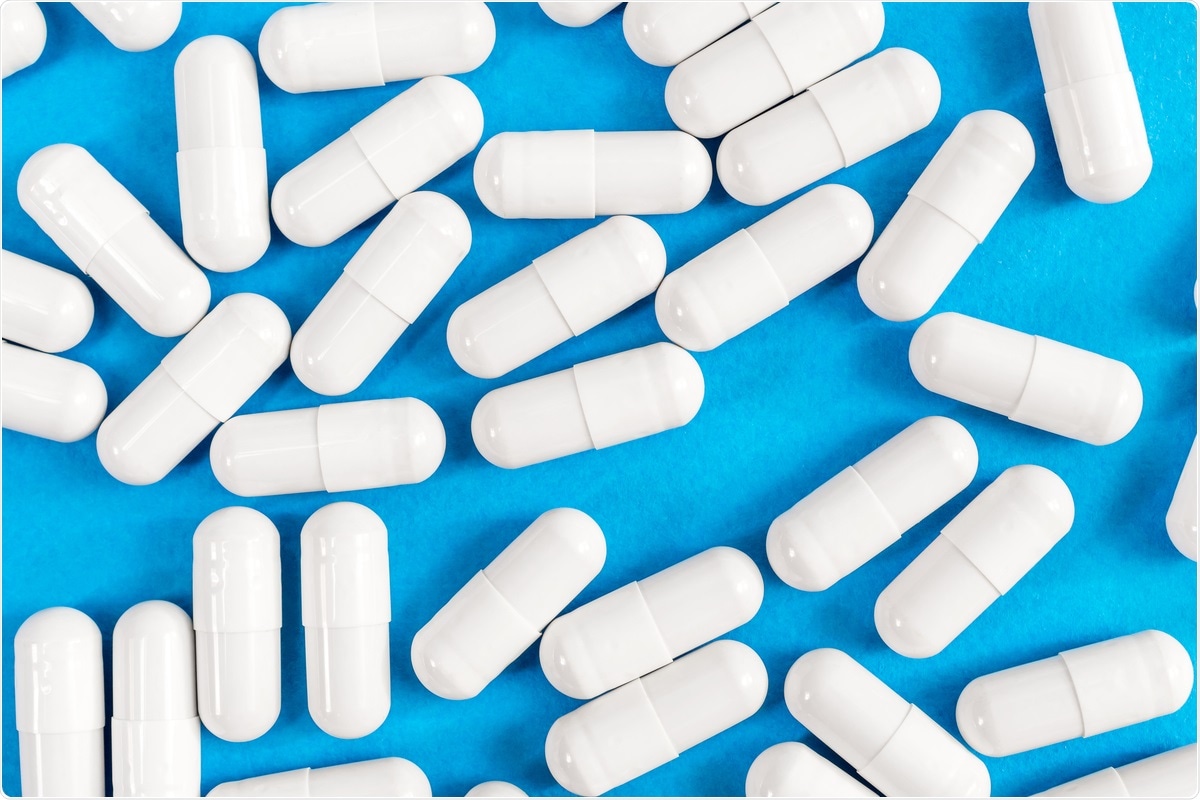An intriguing new study presents a novel approach to biosensor-based evaluation of promising drugs that could inhibit the severe acute respiratory syndrome coronavirus 2 (SARS-CoV-2) via its 3C-like protease (3CLpro), a viral protease.

Background
The 3C-like protease (3CLpro) of SARS-CoV-2, the agent behind the coronavirus disease 2019 (COVID-19) pandemic, may be a valuable approach to developing new antivirals to counteract the virus. To understand its importance, it is necessary to glance at the virus itself.
The viral genome encodes two large polyproteins that undergo autoproteolysis to give rise to a number of viral structural and accessory proteins. Among these are 16 non-structural proteins (nsps).
The cleavage of the polyproteins is mediated by two of the nsps, nsp3 and nsp5. One of the proteases involved in this step is the 3C-like protease, 3CLpro or the main protease that is also called nsp5. Thus, nsp5 inhibition could be an effective antiviral strategy.
In fact, two 3CLpro inhibitors are in ongoing clinical trials against COVID-19.
The discovery of such inhibitors used to be via enzyme assays using the purified form of the enzyme, followed by studies on the effect of such inhibitors on cell permeability and cellular activities on cells in culture. In order to explore SARS-CoV-2 activity in cells, however, Biosafety Level 3 (BSL-3) or BSL-4 laboratories are mandatory, which is a demanding requirement.
Instead, biosensors can be used to prevent the need for such high biosafety levels. This includes a 3CLpro cleavage site inserted into a green fluorescent protein (GFP) that loses its fluorescence on insertion and becomes fluorescent again once the enzyme induces cleavage.
Other biosensors have included a luciferase-modified marker, with a 3CLpro cleavage site in between two complementary luciferase fragments, losing its luminescence by enzymatic cleavage, to be restored with inhibition of its activity. Other GFP-based biosensors have also been described.
However, the level at which these biosensors are expressed affects the readouts, to a large extent, as well as the expression of the enzyme itself. The transfection of the biosensors must be accompanied in many cases by that of the enzyme plasmid as well, or the enzyme must be transfected into a cell with a stable level of biosensor expression. In other cases, the cell is relatively less sensitive to the enzyme inhibitor.
The current study, available on the bioRxiv* preprint server, reports a set of biosensors based on bioluminescence resonance energy transfer (BRET) sensing. These cell-based assays can help identify 3CLpro inhibitors.
How was the biosensor designed?
The biosensor, in this case, called pBRET-1, was made by using the SARS-CoV-2 3CLpro cleavage sequences as the linker between a GFP2 and a Renilla luciferase (RLuc8) molecule, joining them to the N- and C-terminus, respectively. Once the enzyme produced auto-cleavage, the BRET was disrupted, leading to the loss of bioluminescence, which was restored by the addition of 3CLpro inhibitors.
Several other biosensors were also tried out.
What were the findings?
The presence of GC376, a 3CLpro inhibitor, led to a dose-dependent increase in the BRET-pBRET-ratio. They found that as the inhibitor concentration increased, the 3CLpro was cleaved at the N-terminus first, followed by cleavage at the C-terminus, as would be expected from the pattern of maturation of the enzyme.
The efficiency of autocleavage in pBRET-1 can be modulated by altering the cleavage sequence linking GFP2 and 3CLpro and that between the 3CLpro and RLuc8, which in turn could increase its sensitivity to 3CLpro inhibitors. This was the most sensitive among the biosensors.
The half-maximal effective concentration (EC50) for GC376 with pBRET-10 was 11.60 μM, but it declined to 2.72 μM with pBRET-1. The EC50 with Boceprevir and compound 13b was an order of magnitude less than that of GC376, but compound 11a had comparable activity.
Compared to the cell-based assays, both GC376 and Boceprevir showed equivalent EC50 values, but with compounds 11a 1 and 13b, it was nine times below the reported value with this biosensor.
What are the implications?
The researchers showed that their biosensors, which had a BRET-based self-cleaving activity, can be used in BSL-2 laboratories in cell-based assays to identify 3CLpro inhibitor discovery. Especially, pBRET-10 had comparable performance to cell-based assays of antiviral activity.
Further exploration of the mechanism of action shows that the enzyme activity in these biosensors mimics the natural process of activation of this enzyme during viral replication.
Also, this process can be used to identify inhibitors targeting the 3C-like proteases of other coronaviruses, and can be adapted to target the self-cleavage proteases used by other viruses such as Zika and human immunodeficiency virus (HIV).
Overall, the study yielded sensitive biosensors for the cell-based assessment of 3CLpro inhibitors, that can be used in BSL-2 laboratories, which mimics the natural activation of the enzyme in vivo. Similar biosensors can be developed to identify inhibitors for self-cleaving proteases of other viruses as well.
*Important notice
bioRxiv publishes preliminary scientific reports that are not peer-reviewed and, therefore, should not be regarded as conclusive, guide clinical practice/health-related behavior, or treated as established information.
Source
- Hou, N. et al. (2021). BRET-based self-cleaving biosensors for SARS-CoV-2 3CLpro Inhibitor Discovery. bioRxiv preprint. doi: https://doi.org/10.1101/2021.07.28.454072. https://www.biorxiv.org/content/10.1101/2021.07.28.454072v1.
Posted in: Medical Science News | Medical Research News | Disease/Infection News | Healthcare News
Tags: Antibodies, binding affinity, Biomarker, Cell, Cell Death, Coronavirus, Coronavirus Disease COVID-19, Cytoplasm, DNA, Double Membrane, Drug Delivery, Drugs, Genes, Genome, Genomic, immunity, Lipids, Membrane, Molecule, Mutation, Oligonucleotides, Pandemic, Pathogen, Polymerase, Protein, Research, Respiratory, Ribonucleic Acid, RNA, SARS, SARS-CoV-2, Severe Acute Respiratory, Severe Acute Respiratory Syndrome, Syndrome, Transcription, Vaccine, Virus

Written by
Dr. Liji Thomas
Dr. Liji Thomas is an OB-GYN, who graduated from the Government Medical College, University of Calicut, Kerala, in 2001. Liji practiced as a full-time consultant in obstetrics/gynecology in a private hospital for a few years following her graduation. She has counseled hundreds of patients facing issues from pregnancy-related problems and infertility, and has been in charge of over 2,000 deliveries, striving always to achieve a normal delivery rather than operative.
Source: Read Full Article






